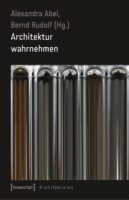
Color as a design tool
The right degree of color design, which is always a color coding, must always be renegotiated in the design process in the context of the application situation and task, so that orientation is maintained, remains or is improved. Physical, chemical, neurobiological, psychological, philosophical, semiotic, cultural-historical, sociological and practical findings can provide assistance. Nevertheless, there is no calculation method, description model or planning procedure that can fully capture the multi-layered effects of color in space. Color becomes a design tool when designers, planners and decision-makers move away from conventional assessments such as “beautiful” and “ugly” and instead focus on the communicative functions of color perception and color design.
Parallel to the development of modernism, a separation of the design profession into a planning-conceptual and a craft-executing part has become established, which is problematic for many reasons. As a result, few architects and designers today can rely on their own experience of craftsmanship in their design work, which is essential for the visual design of material culture. However, color only becomes a modern design tool when planners have comprehensive theoretical knowledge that they can apply against the background of their own practical experience.
Like the technological effects, the multi-layered communicative effects of color must be considered throughout the entire design, planning and implementation process. To achieve this, color must first of all experience a holistic perception of its function as a line-, surface-, body- and space-forming element, as an emotionalizing communication medium, as an identification-forming orientation system, as a visual-haptic surface quality as well as an atmospheric light quality. The communication science, cultural history, natural science, technology, aesthetics and practical application of color should therefore be dealt with in all educational institutions of crafts, technology, design, art and architecture.
No one can avoid dealing with color, because Paul Watzlawick’s axiom also applies to the medium of visual design and communication: you cannot not design in color.
Organizer: Hagemeister GmbH & Co. KG
Venue: Brickworks and Exhibition Center Buxtrup 3 D-48301 Nottuln
Link to the homepage of the organizer


